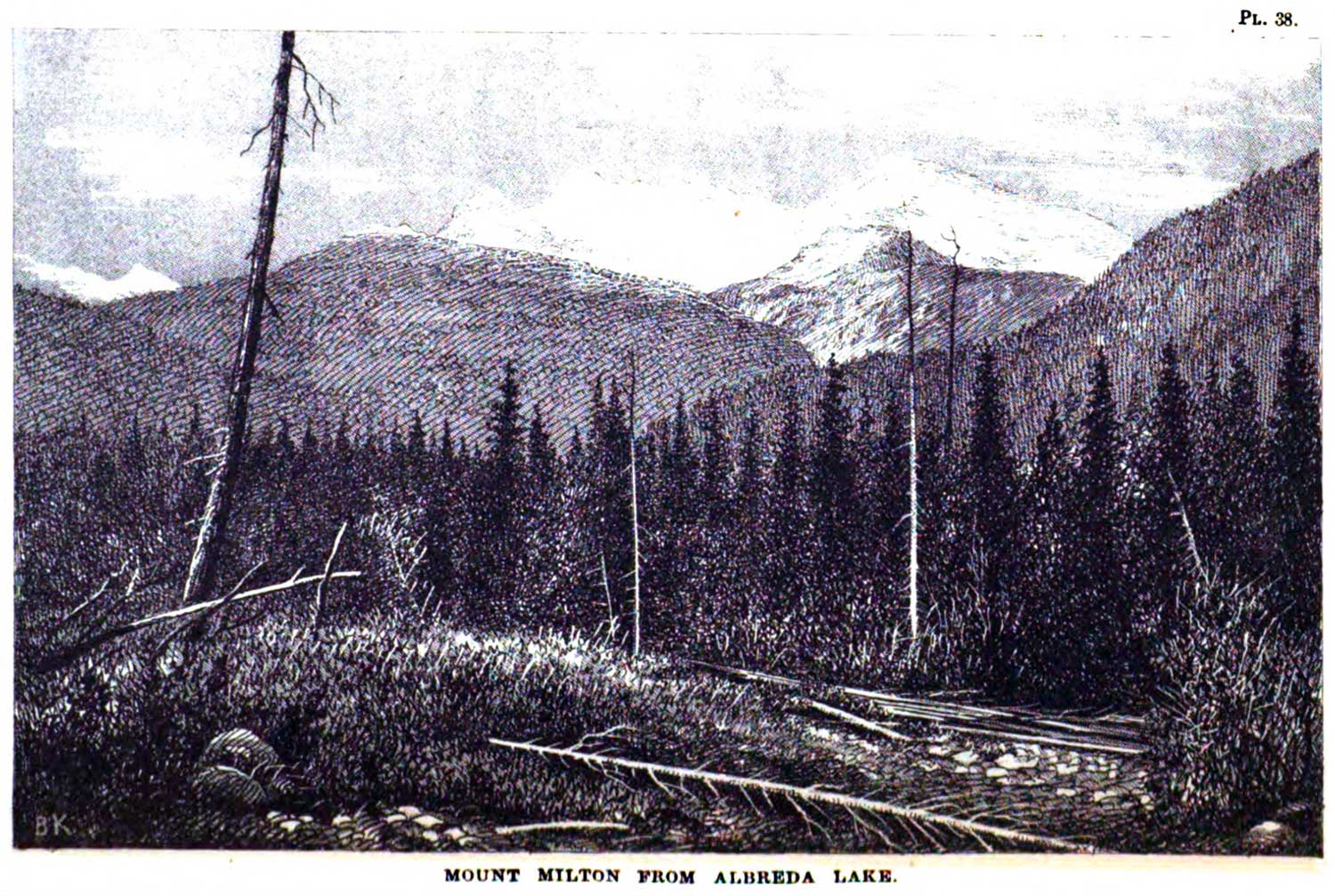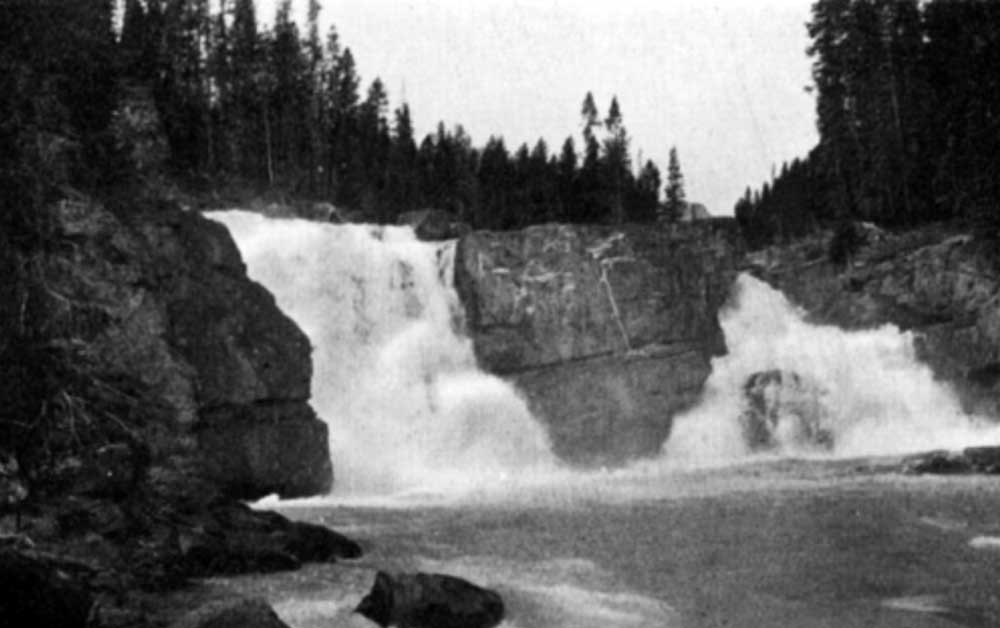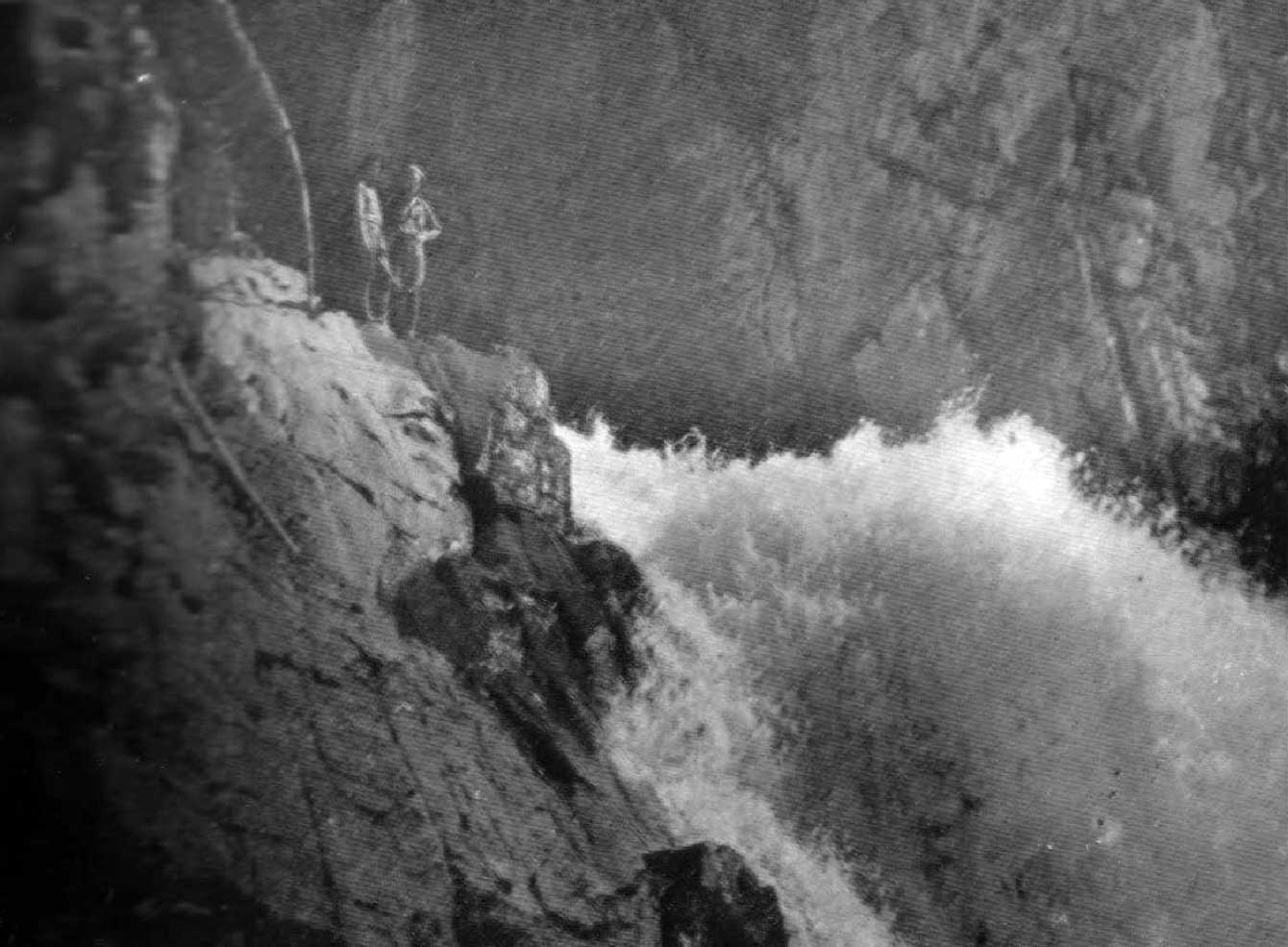Flows SW into Azure River, Wells Grey Park
52.4956 N 119.7872 W — Map 083D05 — Google — GeoHack
Name officially adopted in 1963
Official in BC – Canada
Louie Knutson [1891-1982] was one of the first persons of European descent to settle in the Robson valley. Born in Norway, Knutson emigrated to Canada from the United States in 1910. After a short stint logging on Vancouver Island, he bought two pack horses in Edmonton and headed for the North Thompson valley. He spent the summer in the hills and in the fall came out the Raush River valley to McBride.
After surveying the tar sands for the Alberta government, in 1911 he returned to McBride and went to work for the Grand Trunk Pacific Railway. He was soon back trapping the North Thompson. On a trip out he married Francis Rose Frye [1905–1992], sister of Ella and Mike Frye. Francis was born in North Dakota and had come with her family to the Valemount area in 1911.
Louie and Francis spent their honeymoon on the trapline. Louis discovered a deposit of high-grade ore at the headwaters of the Azure and Hobson rivers in 1916. He built trails and worked this property until he was unable to walk, but failed to get anything out of it. The site was closed to development when it became part of Wells Grey Provincial Park.
- Robson Valley Courier. Weekly newspaper published by Pyramid Press of Jasper from 1968–88 (1968–1988).
- Wheeler, Marilyn [1932–2016]. The Robson Valley Story. McBride, B.C.: Robson Valley Story Group, 1979
- Valemount Historic Society. Yellowhead Pass and its People. Valemount, B.C.: 1984
- Wheeler, Marilyn [1932–2016]. The Robson Valley Story. McBride, B.C.: Sternwheeler Press, 2008
- British Columbia Geographical Names. Knutson Creek


